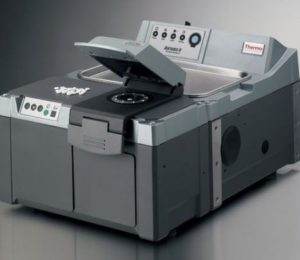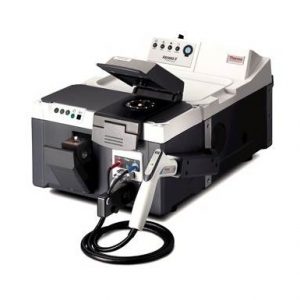Solvent regeneration
Solvent regeneration is a less visible part of many industries. In addition to conventional solvents, also thinners, special cleaning, washing, degreasing and rinsing mixtures based on solvents can be recycled. This not only reduces production costs, but also saves the environment. In addition, solvent emissions are controlled by strict legislation.
- Application description
- FT-NIR spectroscopy
Regeneration takes place by distillation, which treats contaminated liquids, or by cryocondensation, which can be used to purify air contaminated with solvents. The condition for reusing solvents is the control of their chemical composition and purity. Gas chromatography is commonly used for analysis, but it is relatively time consuming, expensive and quite laborious. For these reasons, it is increasingly being replaced by vibrational spectroscopy methods that are extremely fast, inexpensive and easy to use. These methods are based on the interaction of radiation with molecules and the measured spectrum is unique for each chemical compound and for each mixture.
One of the methods of vibrational spectroscopy, which is the most often used for the determination of content components in solvent mixtures, is NIR spectroscopy. Its advantage is the speed, which is also given by the fact that the measured samples do not need to be modified in any way, and then the very low cost of one determination.
 Using the immersion probe, the samples can be measured immediately and the result of the analysis is known within a few seconds. The Antaris II FT-NIR spectrometer offers an easy, reliable and efficient solution for the analysis of all types of solvents. However, its measurement options are far from limited to just liquid samples. It can be also used for the analysis of solid or pasty materials and wastes.
Using the immersion probe, the samples can be measured immediately and the result of the analysis is known within a few seconds. The Antaris II FT-NIR spectrometer offers an easy, reliable and efficient solution for the analysis of all types of solvents. However, its measurement options are far from limited to just liquid samples. It can be also used for the analysis of solid or pasty materials and wastes.
For continuous analyzes, it is possible to use the Antaris MX spectrometer, which measures, just like the Antaris II, in the near-infrared spectrum. Antaris MX allows simultaneous measurement with two or four probes connected to one instrument.
Omnic and TQ Analyst offer users the ability to create calibration methods that can be used to determine a number of parameters of the measured material. These methods can be extended and modified to provide as detailed sample information as possible.
The program uses advanced mathematical algorithms and allows not only the quantification of analytes in the sample, but also the classification of individual materials.


